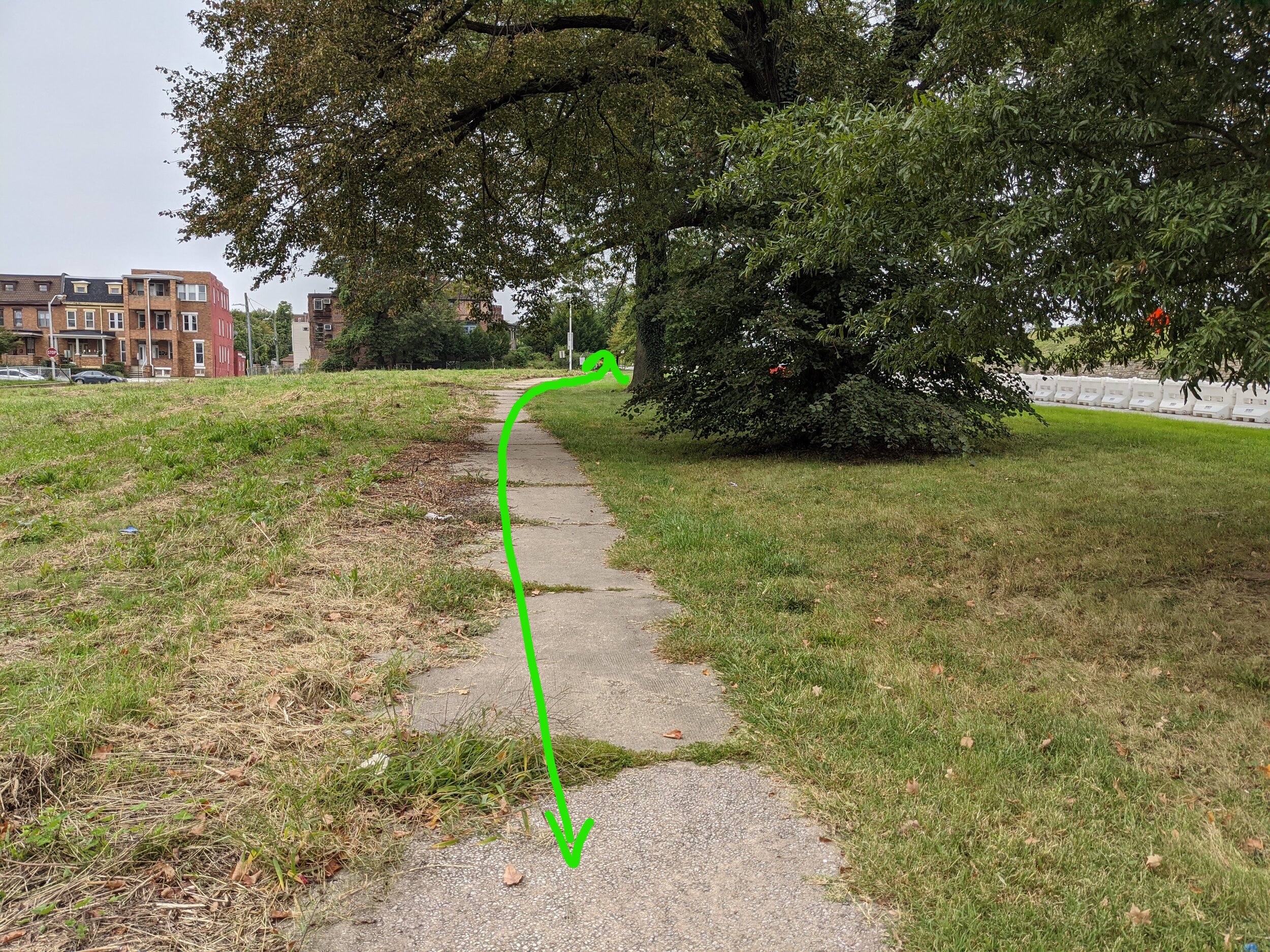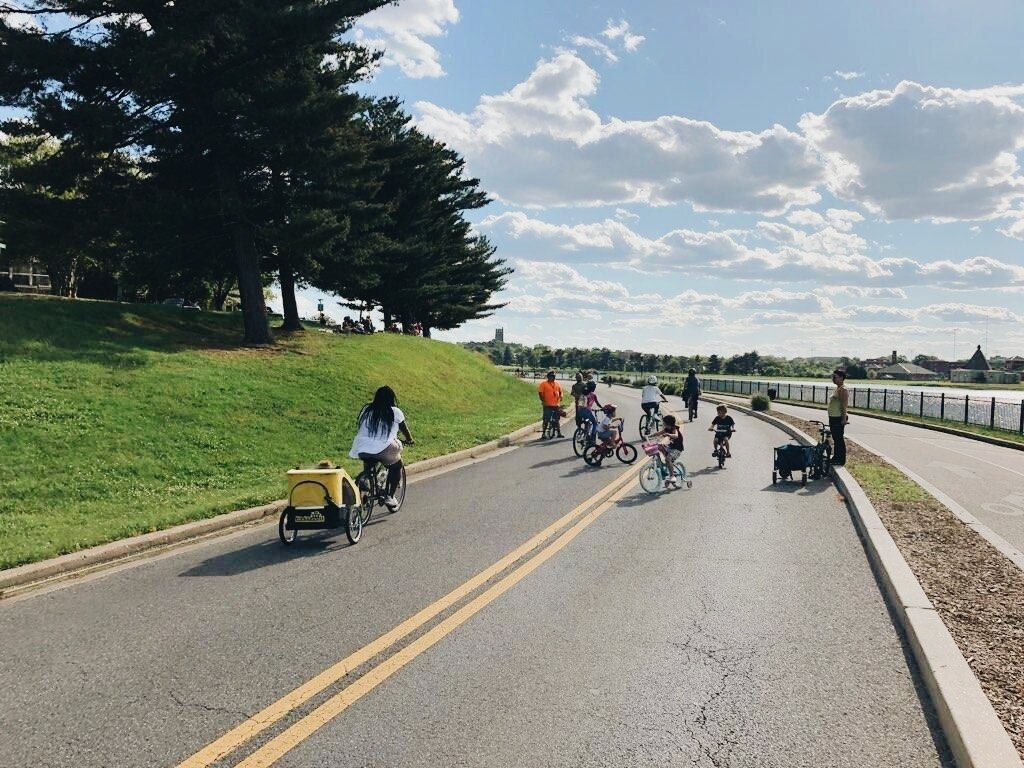Community engagement for 8 80 Cities’s Wintermission in Saint Paul, MN
All evidence is showing us that Baltimore is coping with COVID-19 by spending more time outside. Our parks are full with people walking, running, biking, playing sports, and lifting weights. Bike shops are sold out of bikes and have weeks-long waiting lists for maintenance. And our restaurants and retail spaces have rapidly adapted to COVID-19 by building outdoor dining spaces and sales floors.
Winter is a threat to all of these things, unless Baltimore City begins planning right now. Our businesses must be able to continue using outdoor spaces throughout the winter. While indoor spaces are reopening, many people still prefer the vastly lower risk of shopping, dining, and recreating outdoors. And until we have a widely distributed vaccine, reverting to closure of indoor spaces due to increased transmission is possible. Our citizens, many of whom lack access to a car, must have safe pathways to access public transportation, schools, recreation, grocers, healthcare, and worship. Luckily, cities to our north have long been working on plans to keep the outdoor spaces alive through winter.
Edmonton, Alberta first launched their Winter City Strategy in 2012. In November 2018, 8 80 Cities launched Wintermission: Bringing Public Life to Winter Cities, a competitive grant awarded to three cities (We encouraged Baltimore to apply). Both of these programs aim to safely activate public space through winter. While they are not COVID-19 specific, many of the strategies are directly applicable to our present environment. A few weeks ago, we shared these strategies and Winter City resources with Baltimore City leadership, and are summarizing them below.
Strategies
Re-Prioritize Snow Removal
With the introduction of work-from-home, automobile commuting patterns have changed significantly. Many of the commuters previously entering the city for jobs now work from home, while essential workers continue to commute within and across the city on public transportation. Traditionally, Baltimore City Department of Transportation has prioritized “gateway routes” for snow removal, which are the main arteries for car commuters to enter the city in the morning. This can no longer be the priority.
Baltimore City Department of Transportation should focus on improving winter transportation for pedestrians, bicyclists, public transit users, and local automobile traffic.
Instead of beginning snow clearance on “gateway routes,” full-size plows should prioritize bus lanes and curbside lanes on our most frequent transit routes.
City and contract snow removal using smaller equipment should focus on shared use pathways and bike lanes.
The city must take on and prioritize clearance of snow on public sidewalks adjacent to transit hubs, high ridership bus stops, and on sidewalks along urban main streets and downtown.
The city should pilot residential sidewalk snow clearing in high-density neighborhoods.
Activate our Parks and Play Spaces
Baltimore City Recreation and Parks should make it easier to play outside and provide more opportunities for outdoor activity.
Prioritize snow removal along city trails, park paths, recreational loops, and at playgrounds and skate parks.
Increase commercial vending opportunities at parks and facilities.
Work with new and existing recreational partners and rec centers to encourage multi-season equipment use and outdoor recreation and lesson opportunities.
Run the department’s hiking, biking, and other outdoor recreation programming through winter.
Keep our Businesses Alive
A multi-agency approach should focus on encouraging four season restaurant and retail patio culture.
Building off of Design for Distancing, host a virtual summit with leaders from northern cities with robust four season restaurant and retail patio culture to learn best practices for implementation in Baltimore City.
Simplify and remove regulations to increase year-round use of outdoor space for restaurant and retail patios.
Create easy opportunities and develop clear, simple parameters for the use of fire in outdoor public spaces (fire pits, bonfires, heaters, etc.)
Support Safe Community-Building
The Mayor’s Office of Neighborhoods, the Baltimore Planning Department, and Baltimore City Department of Transportation should work together to help neighbors program outdoor community spaces.
Similar to use of fire for restaurant and retail patios, create easy opportunities and clear, simple parameters for community use of fire in outdoor public spaces like parks, community managed outdoor spaces, and slow streets.
Reconsider the ban on outdoor residential fires, instead creating a guide to activating and heating outdoor residential spaces including clear safety standards.
Work with community associations to distribute information on safely activating outdoor community and residential spaces with physical distanced programming through winter.
This winter could be one of the most difficult seasons many of us have ever lived through. With looming public transit cuts, an uncertain and dangerous political climate, the pandemic still devastating our nation, and many families and businesses barely keeping their heads above water financially, Baltimore City must do everything it can to make life a little more livable for residents and give our businesses every possible chance to stay open.
While the challenges cities to our north typically face every winter pale in comparison to the challenges before us all right now, following their best practices to survive winter will make everything just a little bit easier. We strongly recommend Baltimore City move quickly to adopt winter city strategies, prioritizing those we’ve listed above.










